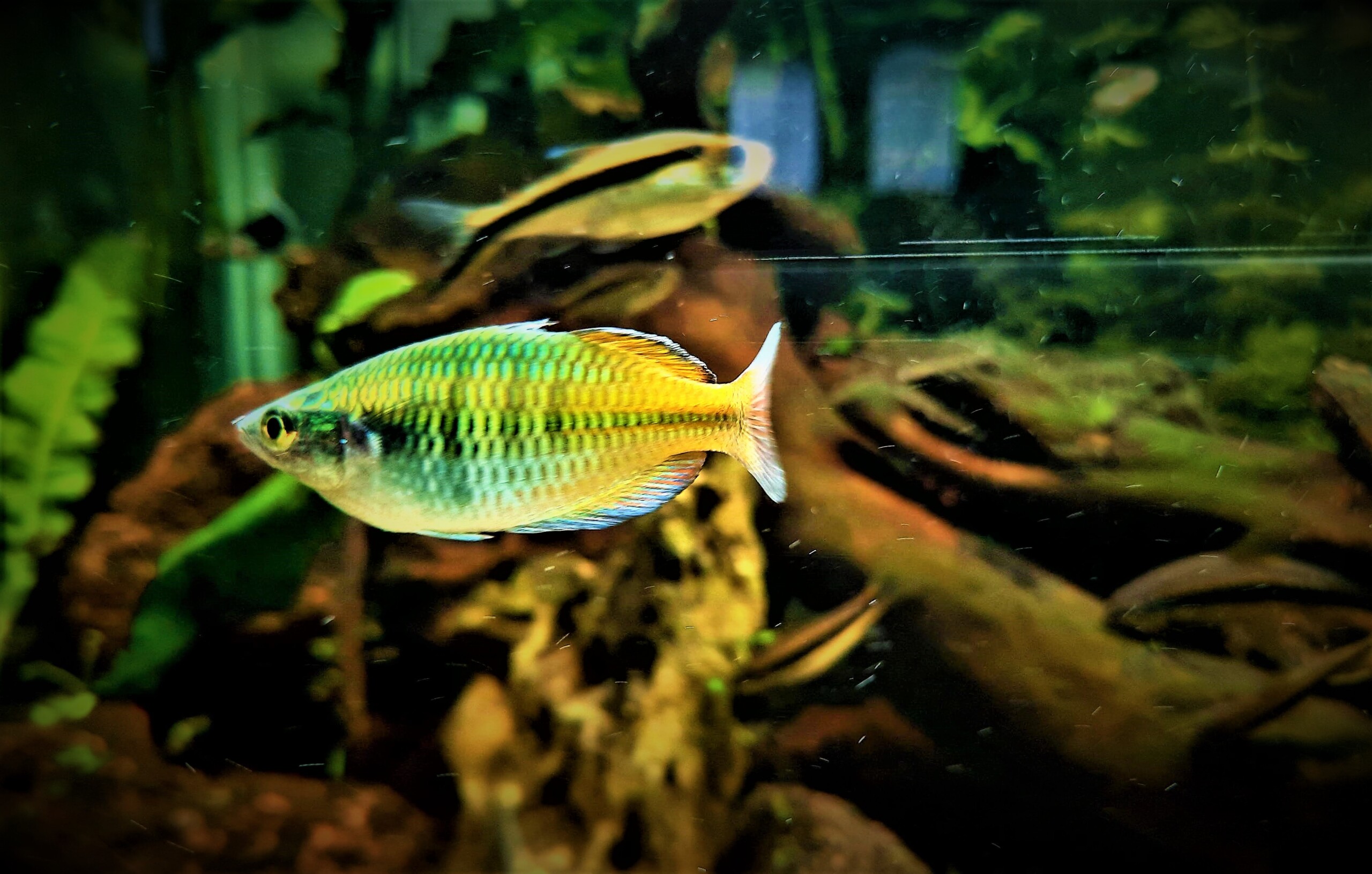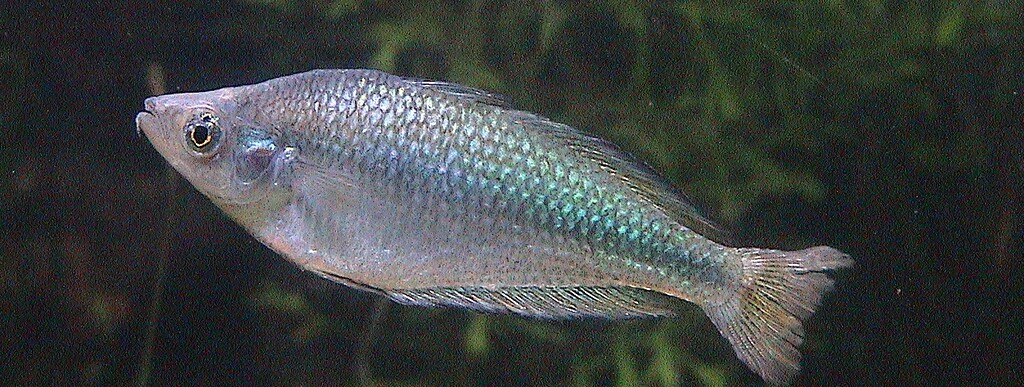

Rainbow fish, belonging to the family Melanotaeniidae, are a captivating addition to freshwater aquariums, renowned for their vibrant colors and lively behavior. Originating primarily from the freshwater rivers and streams of Australia, New Guinea, and surrounding islands, these fish have become increasingly popular among aquarists due to their striking appearance and relatively easy care requirements. Their shimmering scales reflect light in a way that creates a dazzling display, making them a focal point in any aquarium setup.
The diversity within the rainbow fish species is remarkable, with various types exhibiting different colors, sizes, and patterns, which adds to their allure. In addition to their aesthetic appeal, rainbow fish are known for their sociable nature. They thrive in groups, often displaying schooling behavior that enhances their visual impact in an aquarium setting.
This social aspect not only makes them more interesting to observe but also contributes to their overall well-being. As a result, understanding the specific needs and characteristics of rainbow fish is essential for anyone looking to incorporate these stunning creatures into their aquatic environment. This article will delve into the various aspects of keeping rainbow fish, from their behavior and habitat requirements to feeding practices and health care.
Characteristics and Behavior of Rainbow Fish
Physical Characteristics
Rainbow fish are characterized by their elongated bodies and vibrant coloration, which can range from deep blues and greens to bright yellows and reds. The most commonly kept species include the Boesemani rainbow fish (Melanotaenia boesemani), known for its striking blue and orange hues, and the Australian rainbow fish (Melanotaenia fluviatilis), which displays a more subdued yet equally beautiful palette. These fish typically grow to a size of about 3 to 5 inches, depending on the species, and exhibit sexual dimorphism; males are often more colorful and larger than females.
Behavior and Habitat
Behaviorally, rainbow fish are active swimmers that prefer to occupy the middle and upper levels of the aquarium. They are known for their playful antics, darting around the tank and engaging in social interactions with one another.
This activity level makes them an engaging species to observe, as they often display interesting behaviors such as chasing each other or establishing a pecking order within their group.
Care and Considerations
However, it is important to note that while they are generally peaceful, they can exhibit territorial behavior during breeding or when kept in smaller groups.
Therefore, providing ample space and hiding spots is crucial for maintaining harmony among tank inhabitants.
Setting Up the Perfect Habitat for Rainbow Fish in Your Aquarium
Creating an ideal habitat for rainbow fish involves replicating their natural environment as closely as possible. A well-planned aquarium setup should include plenty of swimming space, as these fish are active swimmers that require room to move freely. A tank size of at least 30 gallons is recommended for a small school of rainbow fish, allowing them to establish territories while still having ample space to swim.


The water should be kept at a temperature between 72°F and 78°F (22°C to 26°C) with a pH level ranging from 6.5 to 7.5, mimicking the conditions found in their native habitats. Aquascaping plays a significant role in creating a suitable environment for rainbow fish. Incorporating live plants not only enhances the aesthetic appeal of the aquarium but also provides hiding spots and breeding areas for the fish.
Plants such as Java fern, Anubias, and Amazon sword are excellent choices due to their hardiness and ability to thrive in various water conditions. Additionally, using driftwood or rocks can create natural structures that offer shelter and break up sightlines, reducing potential aggression among tank mates. A sandy or fine gravel substrate is ideal for these fish, as it allows for easy digging and mimics their natural riverbed habitats.
Feeding and Diet Tips for Rainbow Fish
Feeding rainbow fish requires a balanced diet that caters to their omnivorous nature. In the wild, they consume a variety of foods, including small insects, crustaceans, and plant matter. To replicate this diverse diet in captivity, it is essential to provide high-quality flake or pellet food specifically formulated for tropical fish as a staple diet.
These commercial foods are often enriched with essential vitamins and minerals that promote overall health and vibrant coloration. In addition to flakes or pellets, incorporating live or frozen foods such as brine shrimp, daphnia, or bloodworms can enhance their diet and stimulate natural hunting behaviors. Offering these protein-rich foods a few times a week can help maintain their health and vitality.
Furthermore, including blanched vegetables like zucchini or spinach can provide necessary fiber and mimic their natural feeding habits. It is crucial to avoid overfeeding; providing small amounts multiple times a day is preferable to one large feeding session. Monitoring their eating habits will help ensure that all fish receive adequate nutrition without polluting the water.
Breeding and Reproduction of Rainbow Fish in Captivity
Breeding rainbow fish in captivity can be a rewarding experience for aquarists willing to provide the right conditions. These fish are egg scatterers, meaning they do not exhibit parental care after spawning. To encourage breeding behavior, it is advisable to keep a group of at least six individuals—preferably more males than females—to promote natural courtship displays.
The breeding process typically occurs when water conditions are optimal; slightly raising the temperature and performing regular water changes can simulate the rainy season in their native habitats. When ready to spawn, females will lay eggs among fine-leaved plants or spawning mops placed in the aquarium. After spawning, it is essential to remove the adults from the breeding tank to prevent them from eating the eggs or fry.
The eggs usually hatch within 5 to 7 days, depending on water temperature. Once hatched, the fry will initially feed on their yolk sacs before transitioning to infusoria or finely crushed flakes as they grow. Providing adequate space and hiding spots is crucial during this stage to protect the young from potential aggression from adult fish.
Common Health Issues and Care for Rainbow Fish
Like all aquarium inhabitants, rainbow fish can be susceptible to various health issues if not properly cared for. One common problem is ich (Ichthyophthirius multifiliis), a parasitic infection characterized by white spots on the skin and fins of affected fish. This condition often arises from stress due to poor water quality or sudden changes in temperature.
Maintaining stable water parameters through regular testing and performing routine water changes can significantly reduce the risk of ich outbreaks. Another health concern is fin rot, which can occur due to bacterial infections often linked to poor water quality or physical injuries sustained during aggressive interactions with tank mates. Signs of fin rot include frayed or discolored fins; prompt treatment with appropriate medications can help prevent further deterioration.
Additionally, ensuring that rainbow fish are not overcrowded and that they have plenty of hiding spots can minimize stress-related issues. Regular observation of your fish will help you catch any signs of illness early on, allowing for timely intervention.
Compatible Tankmates for Rainbow Fish
Choosing compatible tankmates for rainbow fish is essential for maintaining a peaceful community aquarium. Due to their generally peaceful nature, they can coexist with various species that share similar water requirements and temperaments. Ideal companions include other peaceful schooling fish such as tetras (e.g., neon tetras or cardinal tetras), danios (like zebra danios), and rasboras (such as harlequin rasboras).
These species not only complement the vibrant colors of rainbow fish but also thrive in similar environmental conditions. It is crucial to avoid aggressive or overly territorial species that may stress or harm rainbow fish. Cichlids, particularly those known for aggressive behavior like African cichlids, should be avoided as tankmates due to their potential for conflict.
Additionally, larger predatory fish may view rainbow fish as prey; therefore, selecting appropriately sized companions is vital for ensuring a harmonious aquarium environment. By carefully considering tankmate compatibility based on temperament and size, aquarists can create a thriving community tank that showcases the beauty of rainbow fish alongside other compatible species.
Tips for Keeping Rainbow Fish Happy and Healthy in Your Freshwater Aquarium
To ensure that rainbow fish remain happy and healthy in your aquarium, several key practices should be followed consistently. First and foremost is maintaining optimal water quality through regular testing and routine water changes. Keeping ammonia and nitrite levels at zero while maintaining low nitrate levels is crucial for preventing stress-related health issues.
Additionally, using a high-quality filtration system will help keep the water clean and well-oxygenated. Another important aspect of care involves providing enrichment within the aquarium environment. Incorporating various decorations such as plants, rocks, and driftwood not only enhances visual appeal but also offers hiding spots that help reduce stress among the fish.
Regularly rearranging decorations can stimulate curiosity and encourage natural behaviors as they explore their surroundings. Lastly, observing your rainbow fish daily will allow you to monitor their health closely; any changes in behavior or appearance should be addressed promptly to ensure their well-being remains uncompromised. By understanding the unique needs of rainbow fish—from habitat setup and dietary requirements to social interactions—aquarists can create an environment where these stunning creatures thrive while providing endless enjoyment through their vibrant displays of color and activity.










